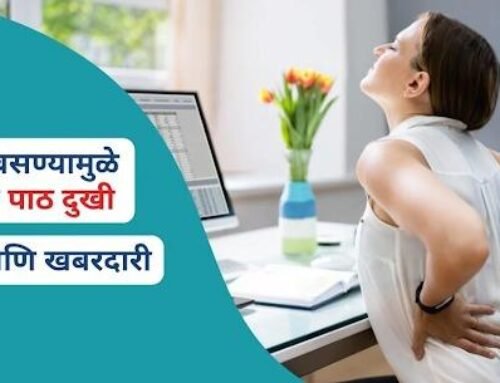Back pain is a common issue that affects millions of people worldwide. While surgery can sometimes be necessary, many non-surgical treatments can effectively alleviate pain and improve quality of life. Understanding these options can empower you to take control of your health and explore the best possible treatment methods. In this article, we will delve into various non-invasive techniques to help you manage and treat your back pain effectively.
Understanding the Causes of Back Pain
Before diving into treatments, it is crucial to understand the root causes of back pain. Back pain can result from various factors, including:
- Muscle or ligament strain: Overexertion, sudden movements, or heavy lifting can strain the muscles and ligaments in your back, leading to pain and discomfort.
- Herniated or bulging discs: Discs act as cushions between your vertebrae. When these discs become damaged, they can press on nerves and cause significant pain.
- Arthritis: Osteoarthritis can affect the lower back, leading to stiffness and discomfort.
- Skeletal irregularities: Conditions like scoliosis can cause the spine to curve abnormally, resulting in pain.
Identifying the underlying cause of your back pain is essential in choosing the most effective treatment.
1. Physical Therapy
Physical therapy is often the first line of treatment for back pain. A skilled physical therapist can design a personalized exercise program that strengthens the muscles supporting your spine, improves flexibility, and promotes better posture. Key components of physical therapy include:
- Stretching exercises: To improve flexibility and reduce muscle tension.
- Strengthening exercises: Focusing on the core muscles, which support the lower back.
- Aerobic conditioning: Low-impact activities like walking or swimming can improve overall fitness and reduce back pain.
By adhering to a physical therapy program, many patients experience significant pain relief and improved function without the need for surgery.
2. Chiropractic Care
Chiropractic care involves manual manipulation of the spine to improve alignment and relieve pain. Chiropractors use hands-on techniques to adjust the spine, which can help alleviate pressure on nerves and improve mobility. This treatment is particularly effective for:
- Lower back pain
- Sciatica
- Chronic back pain
Regular chiropractic adjustments can lead to long-term pain relief and enhanced spinal health.
3. Pain Management Injections
When back pain becomes severe and other treatments are not effective, pain management injections may be an option. These injections deliver medication directly to the source of pain and can provide temporary relief, allowing patients to participate in physical therapy and other treatments more effectively. Common types of injections include:
- Epidural steroid injections: Reduce inflammation around the nerve roots.
- Facet joint injections: Target pain in the small joints of the spine.
- Nerve blocks: Temporarily disable the nerves causing pain.
While injections are not a permanent solution, they can be a valuable part of a comprehensive pain management plan.
4. Acupuncture
Acupuncture is an ancient Chinese medicine practice that involves inserting thin needles into specific points on the body. It is believed to stimulate the body’s natural healing processes and alleviate pain. Acupuncture is particularly effective for:
- Chronic lower back pain
- Sciatica
- Muscle spasms
Many patients find relief after just a few sessions, making acupuncture a popular alternative to traditional pain management methods.
5. Lifestyle Modifications
Making certain lifestyle changes can have a profound impact on managing and preventing back pain. Consider the following adjustments:
- Maintain a healthy weight: Excess weight can strain the spine and exacerbate pain.
- Stay active: Regular physical activity can strengthen your back and prevent stiffness.
- Practice good posture: Proper posture reduces stress on the spine and prevents pain.
- Use ergonomic furniture: Chairs and workstations designed for spinal health can reduce pain during daily activities.
By incorporating these habits into your daily routine, you can significantly reduce your risk of developing chronic back pain.
6. Yoga and Mindfulness
Yoga and mindfulness practices have gained popularity as effective methods for managing back pain. Yoga involves a combination of stretching, strength-building, and breathing exercises, which can:
- Improve flexibility
- Strengthen core muscles
- Promote relaxation
On the other hand, mindfulness involves focusing on the present moment and can help reduce pain perception. Techniques such as deep breathing and meditation can help manage stress, which is often a contributing factor to chronic pain.
7. Over-the-Counter Pain Relief
For mild to moderate pain, over-the-counter (OTC) medications can provide relief. Common options include:
- Nonsteroidal anti-inflammatory drugs (NSAIDs): Such as ibuprofen or naproxen, reduce inflammation and pain.
- Acetaminophen: An analgesic that helps relieve pain but does not reduce inflammation.
While OTC medications can be effective, they should be used as directed and not relied upon as a long-term solution.
8. Heat and Cold Therapy
Heat and cold therapy are simple, yet effective methods for managing back pain. These therapies can be used individually or alternated, depending on the nature of your pain:
- Heat therapy: Helps relax tight muscles and improve blood flow. Use a heating pad or warm bath for relief.
- Cold therapy: Reduces inflammation and numbs the pain. Apply an ice pack to the affected area for short periods.
These therapies are particularly useful for acute injuries or flare-ups of chronic pain.
9. Massage Therapy
Massage therapy can provide significant relief for individuals suffering from back pain. By manipulating the muscles and soft tissues, massage therapy can:
- Reduce muscle tension
- Improve circulation
- Enhance flexibility
Regular sessions with a licensed massage therapist can help manage pain and prevent future episodes.
10. Alternative Therapies
In addition to the treatments mentioned above, several alternative therapies can be explored for back pain relief, including:
- TENS (Transcutaneous Electrical Nerve Stimulation): A device that sends electrical pulses to the nerves to reduce pain.
- Biofeedback: A technique that teaches you how to control bodily functions to reduce pain.
- Herbal supplements: Some herbs, like turmeric and devil’s claw, have anti-inflammatory properties that may help manage pain.
It’s important to consult with a healthcare provider before starting any alternative therapy to ensure it’s appropriate for your condition.
Get The Best Back Pain Treatment At The Prolotherapy Clinic
Back pain can be debilitating, but surgery is not the only solution. By exploring and combining various non-surgical treatments, you can effectively manage and alleviate your pain, improving your overall quality of life. From physical therapy and chiropractic care to lifestyle changes and alternative therapies, there are numerous ways to find relief without undergoing surgery. Visit the Prolotherapy Clinic for the best back pain treatment in Pune.




